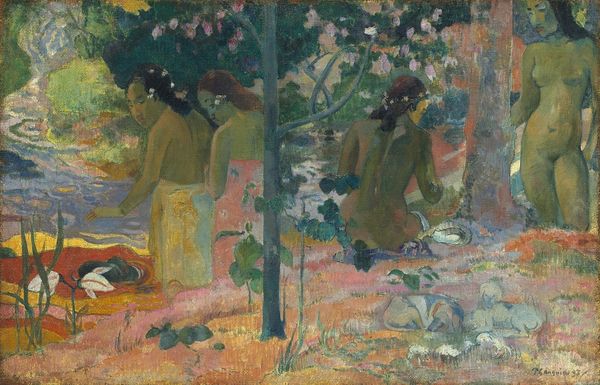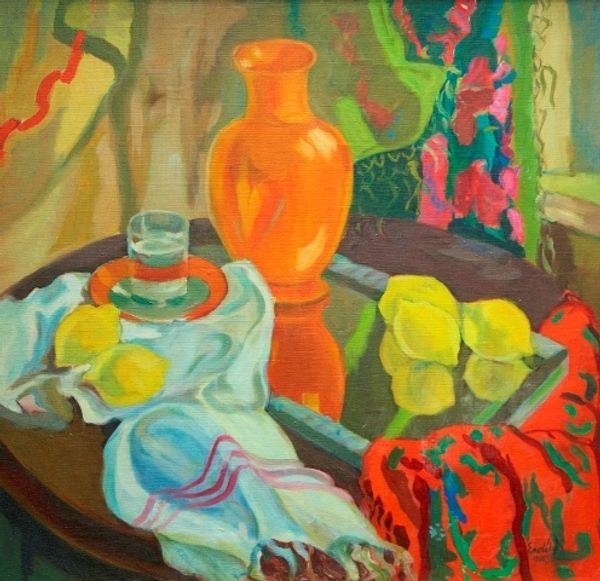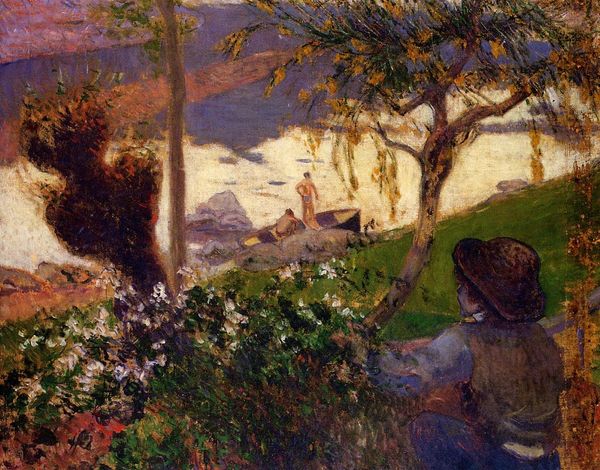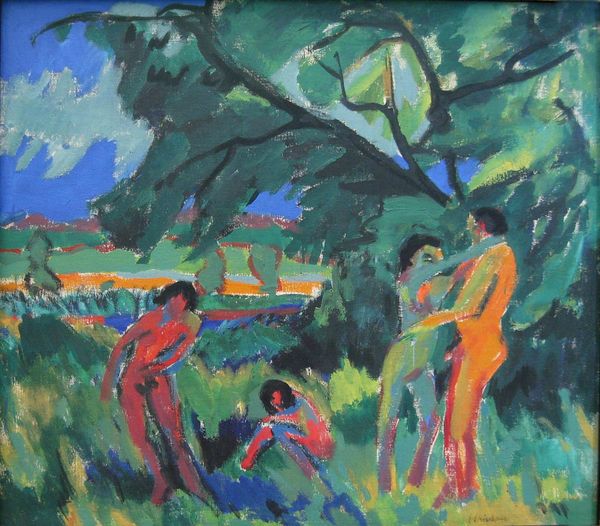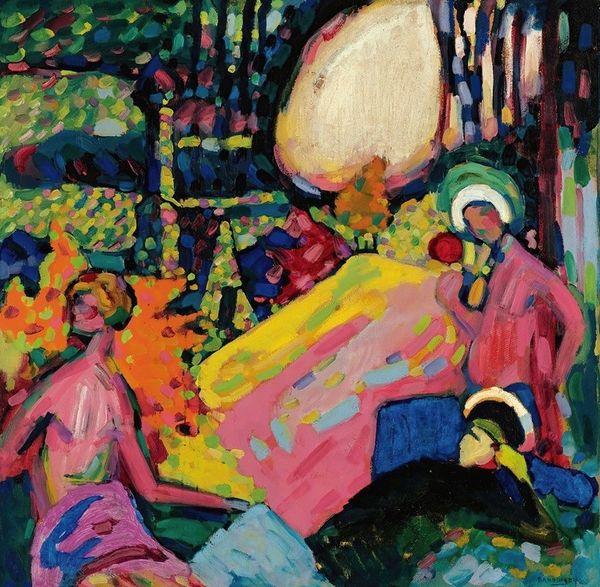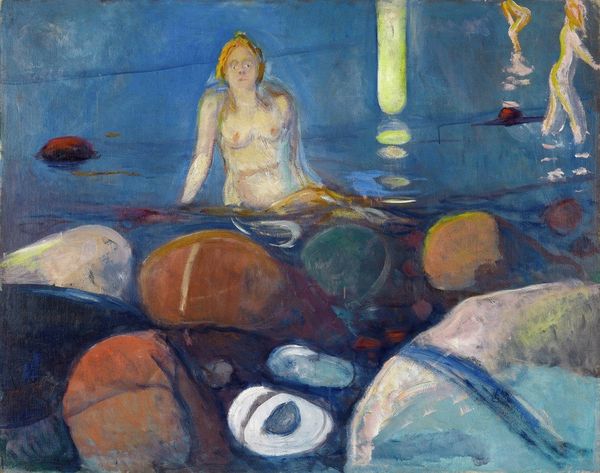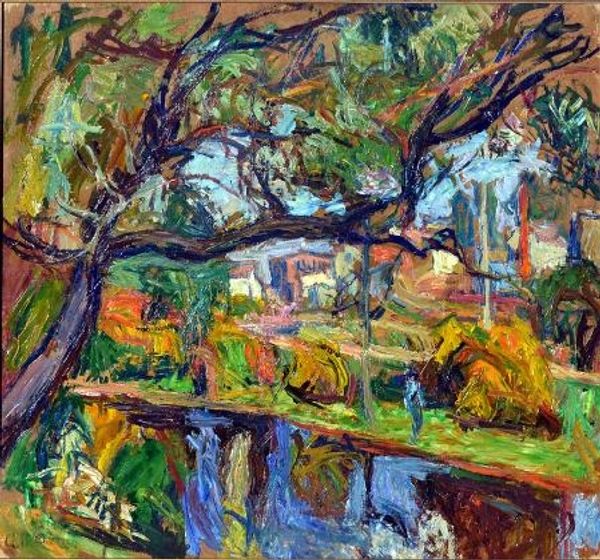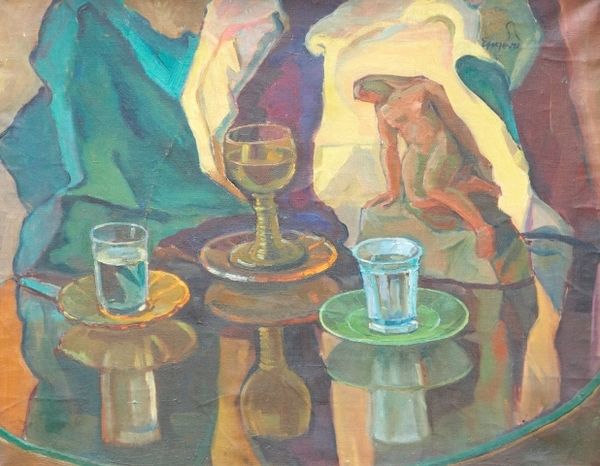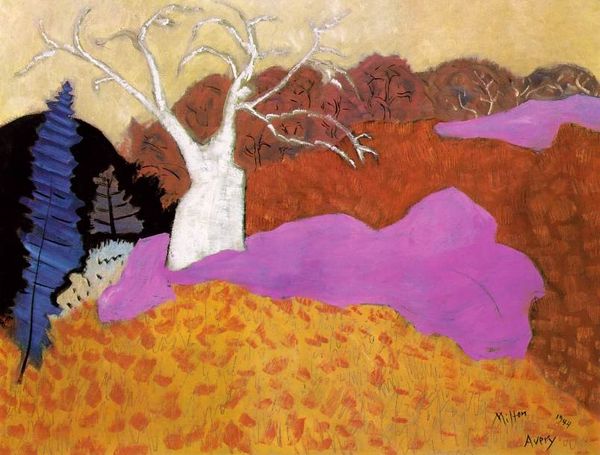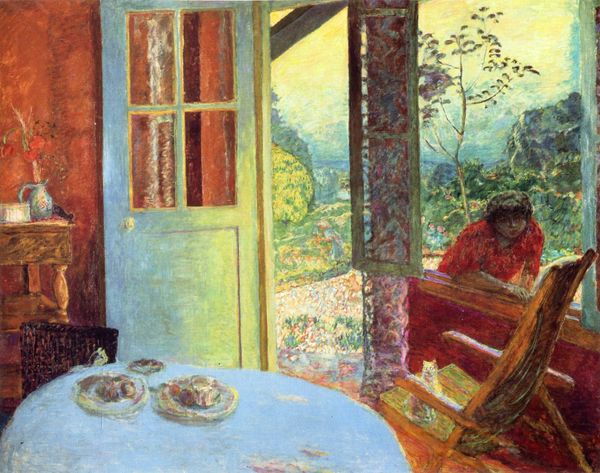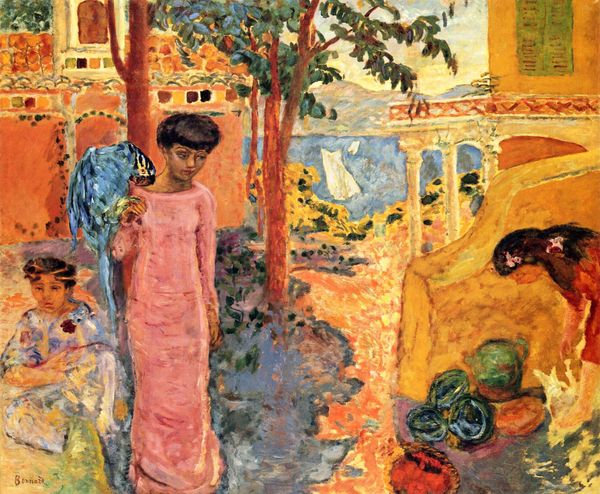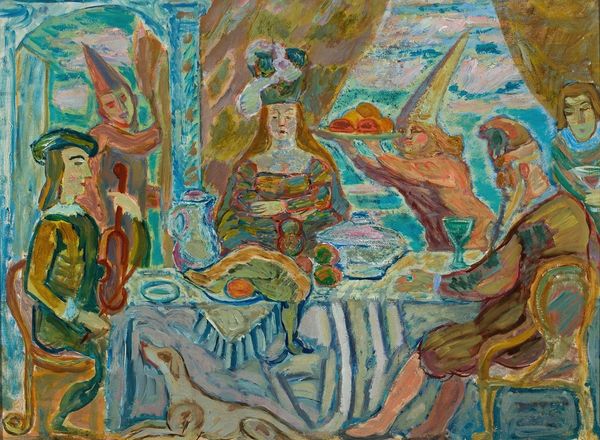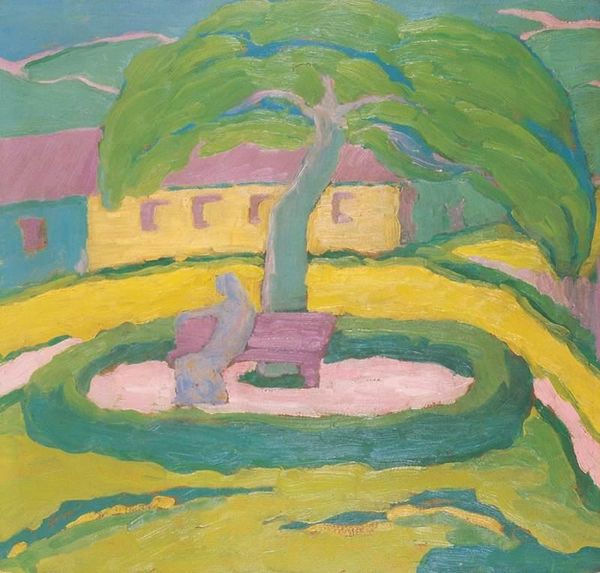
Dimensions: 148 x 194.9 cm
Copyright: Public domain
Editor: Here we have Pierre Bonnard's "The Terrace at Vernon," painted in 1939 with oil on canvas. The vibrant colours make me feel like I'm stepping into a warm, sun-drenched day. What catches your eye most about this painting? Curator: The recurrence of domestic symbolism here. Beyond just a scene of leisure, this painting uses symbolic weight that gestures at memory, familial relations and quiet observation. The woman by the table—is she an echo of idealized motherhood, offering sustenance and silent companionship? Consider also the tree. Editor: A symbol for familial relations? I hadn't considered that. Curator: Trees often represent growth, stability, and connection to roots – family origins and heritage, if you will. Note its dominating presence; almost a matriarchal symbol itself, silently observing generations. Then there are the fruits. Editor: The plate of fruit does seem significant, a symbolic representation of life's bounty. What about the woman tending the garden at the back, carrying what seems to be a basket full of colourful flowers? Curator: Flowers and gardens, frequently emblems of femininity, cyclical life, and beauty carefully cultivated, suggesting emotional nurture. So we have, essentially, several depictions of the self-sacrificing, care-giving figure. Editor: So the figures, colours and items aren't arbitrary then – Bonnard deliberately chose and arranged these symbols? Curator: Precisely. Bonnard, an artist of intimate scenes, often veiled his personal narratives in potent, recurring motifs and symbols. Consider how memory intertwines with his compositions, creating an experience, not merely an image. Editor: It's amazing how much meaning can be embedded in something that initially seems like a simple domestic scene. Thanks for shining a light on the painting's language of symbols.
Comments
No comments
Be the first to comment and join the conversation on the ultimate creative platform.
